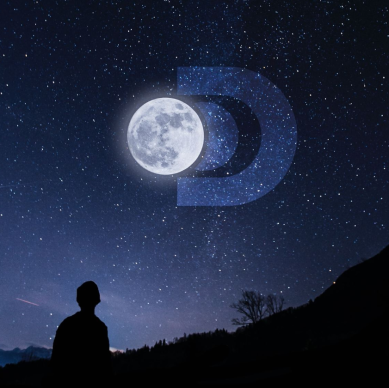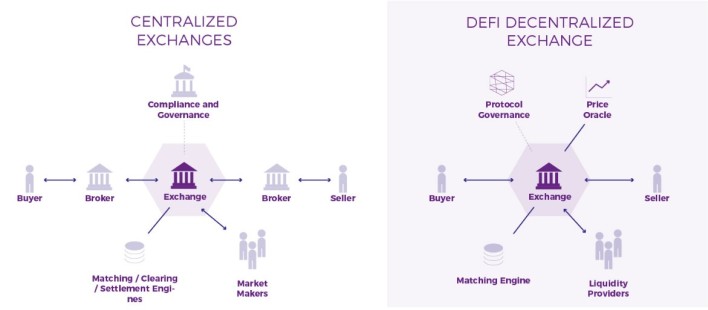Blog / Leadership & Transformation
Meet DFX: The Neobroker for DeFi assets!
Categories

In this following article, we are presenting the Alumni Jonas Surmann. He studied a Master's in Blockchain Technology in 2021 at Zigurat. During his studies, he co-founded DFX, a DeFi (decentralized finance solution) incorporated in Switzerland in June 2021. According to him, Zigurat's Master helped him understand the concepts of Blockchain, tokenization and decentralized protocols more deeply and allowed him to develop his personal startup endeavor.
“Legacy financial infrastructure is characterized by slow settlement cycles, inefficient price discovery, liquidity challenges, and the lack of assurance around underlying assets, DeFi aims to address some of these challenges”, by the Wharton Blockchain and Digital Asset Project
Decentralized Finance
DeFi stands for an evolving financial sector that enables financial transactions and instruments without the need for financial intermediaries like banks or clearing houses. The transactions and clearing of trades are done by decentralized protocols that are secured and verified by network nodes. These nodes check and validate each transaction executed on the protocol. This ecosystem replaces traditional intermediaries needed in traditional markets to execute trades and transactions, as we can see in the following graphic.

Moreover, there needs to be a link to the real markets so that these decentralized assets represent a valid and legit alternative to the underlying asset (also known as tokenization), which means the prices of decentralized assets are similar to the real assets. This is done by price oracles that feed the protocols with prices from traditional financial markets.
DFX - the Fiat gateway for DeFI
DFX builds the gateway between traditional markets and the DeFi space. Therefore DFX developed a possibility to simply enter and exit the DeFi space with common SEPA bank transactions. It basically means that anyone can invest in and also sell those assets. A big advantage is that DFX enables users to keep full control over their assets since DFX has built a non-custodial wallet where those assets are transferred to and stored by the user. DFX does not hold any funds for its customers, which is a massive advantage compared to other brokerage firms that control the funds of their customers. Although investors buy and sell DeFi tokens via DFX, they remain independent and do not need to trust DFX.
To conclude, we can say that with a non-custodial wallet, you have exclusive control of your private keys, which in turn means that you control your cryptocurrency and prove that the goods are yours. While, with a custodial wallet, another party holds your private keys.
Tokenization of securities
By investing in DeFi assets like tokenized stocks, ETFs on commodities, or companies that are offered by DFX, users invest in assets that are tradable 24/7 in a permissionless way since there is no party to prohibit these trades. Of course, these assets are not real securities but rather derivatives on the underlying asset.
As a result, token holders of these tokenized stocks do not have any voting rights or claim to dividend payments, but they can participate in possible price increases of these assets.
Many people invest in stocks or ETFs due to the generation of cash flow through dividends. Tokenized assets do not provide this possibility. However, there is a more attractive way to generate cash flow on your DeFi assets, including higher yields, called Liquidity Mining. In order to understand Liquidity Mining, the main functionality of a decentralized exchange (DEX) needs to be studied.
Liquidity mining is a strategy by which DeFi (Decentralized Finance) protocols seek to capture users' attention so that they can inject funds into these protocols. These rewards commonly stem from trading fees accrued from traders swapping tokens.
Decentralized Exchange (DEX)
A DEX is the decentralized counterpart of a stock exchange run by a centralized operator or company. Exchanging assets on a DEX are executed and validated by the nodes of the protocol. Enabling trades on a DEX requires a liquidity pool containing two assets that are supposed to be exchanged against each other. If a user decides to swap token A against token B, token A is given into the liquidity pool, whereas token B is taken out of the pool. The relationship between the amount of tokens A and B determines the price of the tokens.
The liquidity providers of those pools are rewarded for their service and earn commissions for each trade being executed plus rewards that are paid out by the protocol. The commissions are paid by the DEX traders as a transaction fee wheareas the rewards are coming from the protocol and are predetermined. The yields are usually way higher than through dividend payment which is why it is so attractive for investors. To grasp how powerful these tokenization of assets is, you can look at the fungibility of these tokens. For instance, it will be possible to swap tokenized stocks against fractions of tokenized real estate without swapping into cash beforehand.
“This fungibility of assets will redefine everything since any asset can be swapped against anything without the need of a currency.”
by Jonas Surmann.
What is DFX?
DFX, founded in Switzerland in 2021, is a smartphone wallet for assets in the space of decentralized finance (DeFi). Therefore DFX uses the DeFiChain protocol, which is a DeFi protocol enabling financial instruments like stocks, ETFs, loans, options, or futures in a completely decentralized way. Furthermore, this Proof-of-Stake (PoS) protocol is a Bitcoin fork. Its code was copied and edited to allow faster Blockchain transactions, a much-needed feature considering the increasing amount of payment transactions, which is needed in the case of those assets considering the number of transactions.
The DXF Wallet
The DFX wallet enables all the mentioned features above, buying/selling of tokenized stocks/ETFs, Liquidity Mining, and swaps of tokenized assets against other assets on the decentralized exchange, for instance, against Bitcoin or DFI and even staking of DFI.
DFX for business accounts
While most other brokerage firms are focused on and built solely for retail investors, DFX allows B2C as well as B2B customers to have direct exposure to DeFi. Onboarding of B2B customers like institutional investors is at the heart of DFX, and the onboarding process can be completed within just one business day.
The DXF Wallet
Another service offered by DFX is Staking, with yields up to 45% per year. Staking is done by master nodes to secure and validate the network. By doing so, master nodes are rewarded for their service with DFI, the native token of the protocol. Since the creation of a master node costs 20’000 DFI (~60’000 USD), DFX pools the DFI of its customers to create master nodes for them, split up the rewards, and pays them out to the customers or rather reinvests them if the user has chosen to do so. A feature that only DFX offers is to cash out staking rewards to the bank account right away. Since staking rewards are paid out by DFX daily, investors generate cash flow on a very regular basis which is a massive advantage compared to dividends that are paid out only on a quarterly or even just a yearly basis.
All in all, DFX was built to bring two worlds together, the Fiat and the DeFi world, enabling any investor to invest smoothly into DeFi and vice versa. Mass adoption of DeFi is our goal, and with direct Crypto-to-DeFi as well as credit card payments that we implement throughout the year 2022, we’re on track to achieve that goal.





